 W
WLieutenant General Sir Charles Alexander Anderson, was Commander of British Troops in South China.
 W
WLieutenant General Sir Charles George Arbuthnot was a British Army officer. He served in the Royal Artillery in the Crimean War and rose to become a senior officer in British India.
 W
WMajor General Sir Harcourt Mortimer Bengough joined the British Army in 1855, and retired in 1899, after more than forty years of distinguished service from the Crimea to all quarters of the Empire.
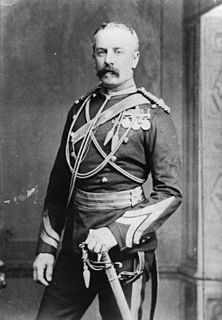 W
WLieutenant-Colonel Lord William Leslie de la Poer Beresford was an Irish soldier and recipient of the Victoria Cross, the highest and most prestigious award for gallantry in the face of the enemy that can be awarded to British and Commonwealth forces.
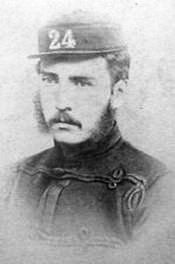 W
WMajor Gonville Bromhead VC was a British Army officer and recipient of the Victoria Cross, the highest award for valour in the face of the enemy that can be awarded to members of the British armed forces. He received the medal for his part in the defence of Rorke's Drift in January 1879, in which a small British garrison of 139 soldiers successfully repulsed an assault by some 4,000 Zulu warriors. Bromhead was portrayed by Michael Caine in the film Zulu, which depicted the battle.
 W
WMajor General Ralph Arthur Penrhyn Clements,, commonly known as R. A. P. Clements, was a senior British Army officer.
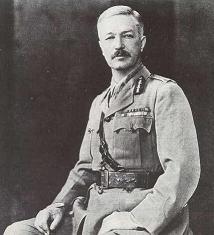 W
WColonel Reginald Edward Harry Dyer, CB was an officer of the Bengal Army and later the newly constituted Indian Army. His military career began serving briefly in the regular British Army before transferring to serve with the Presidency armies of India. As a temporary brigadier-general he was responsible for the Jallianwala Bagh massacre in Amritsar. He has been called "the Butcher of Amritsar", because of his order to fire on a peaceful crowd. The official report stated that this resulted in the killing of at least 379 people and the injuring of over a thousand more. Some submissions to the official inquiry suggested a higher number of deaths.
 W
WColonel Charles James William Grant VC was a Scottish recipient of the Victoria Cross, the highest and most prestigious award for gallantry in the face of the enemy that can be awarded to British and Commonwealth forces.
 W
WGeneral Sir Richard Cyril Byrne Haking was a British general who commanded XI Corps in the First World War.
 W
WMajor General Hubert Ion Wetherall Hamilton was a senior British general who served with distinction throughout his career, seeing battle in the Mahdist War in Egypt and the Second Boer War in South Africa, before being given command of the British Third Division at the outbreak of the First World War. Just two and a half months later at the height of the Race for the Sea, General Hamilton was killed by artillery fire whilst surveying the front line, the first British divisional commander to be killed in action during the conflict. He had received several honours for his service and was popular amongst his men, who nicknamed him "Hammy" and expressed sorrow at his death; each regiment in his division despatched representatives to his funeral, despite being involved in heavy fighting less than a mile away.
 W
WErnest William Lyons Holt or E. W. L. Holt was an eminent English marine naturalist and biologist who specialized in ichthyology, the study of fish. His work helped lay a scientific foundation for the fishery management in Ireland, and together with William Spotswood Green, he strongly influenced the development of the Irish Fisheries in its early years.
 W
WMajor-General Robert George Kekewich, CB was a Victorian era British Army officer.
 W
WMajor-General Francis Henry Kelly was Commander of British Troops in South China.
 W
WWilliam Knox-Leet VC CB, was an Irish recipient of the Victoria Cross, the highest and most prestigious award for gallantry in the face of the enemy that can be awarded to British and Commonwealth forces.
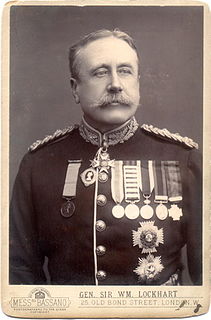 W
WGeneral Sir William Stephen Alexander Lockhart was a British General.
 W
WFrederick John Dealtry Lugard, 1st Baron Lugard, known as Sir Frederick Lugard between 1901 and 1928, was a British soldier, mercenary, explorer of Africa and colonial administrator. He was Governor of Hong Kong (1907–1912), the last Governor of the Southern Nigeria Protectorate (1912–1914), the first High Commissioner (1900–1906) and last Governor (1912–1914) of the Northern Nigeria Protectorate and the first Governor-General of Nigeria (1914–1919).
 W
WLieutenant-General Sir Herbert Taylor MacPherson was a Scottish recipient of the Victoria Cross, the highest and most prestigious award for gallantry in the face of the enemy that can be awarded to British and Commonwealth forces.
 W
WField Marshal William Gustavus Nicholson, 1st Baron Nicholson, was a British Army officer who served in the Second Anglo-Afghan War, the Mahdist War, the Third Anglo-Burmese War, the Second Boer War and the First World War. He became Chief of the Imperial General Staff and was closely involved in the reorganisation of the British Army in the early years of the 20th century.
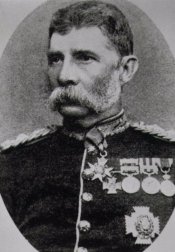 W
WGeneral Sir Harry North Dalrymple Prendergast, was a recipient of the Victoria Cross, the highest and most prestigious award for gallantry in the face of the enemy that can be awarded to British and, in imperial times, Commonwealth forces.
 W
WMajor-General Sir William Penn Symons KCB was a British Army officer who was mortally wounded as he commanded his forces at the Battle of Talana Hill during the Second Boer War. While his forces won the battle, they had to abandon their position and fall back to Ladysmith. Symons and the more severely wounded were left to the Boers; he died three days later as a prisoner of war. A monument to his valour was raised in Victoria Park, Saltash, Cornwall, UK.
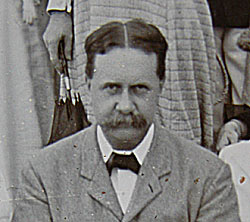 W
WSir Richard Carnac Temple, 2nd Baronet, was the British Chief Commissioner of the Andaman and Nicobar Islands and an anthropological writer.
 W
WSir Michael Joseph Tighe (1864–1925) was a British Army general who served in East Africa during World War I.
 W
WField Marshal Sir George Stuart White, was an officer of the British Army. He was stationed at Peshawar during the Indian Mutiny and then fought at the Battle of Charasiab in October 1879 and at the Battle of Kandahar in September 1880 during the Second Anglo-Afghan War. For his bravery during these two battles, he was awarded the Victoria Cross. He went on to command a brigade during the Third Anglo-Burmese War in 1886 and became commander of Quetta District in 1889 in which role he led operations in the Zhob Valley and in Balochistan. He was commander of the forces in Natal at the opening of the Second Boer War and fought at the Battle of Elandslaagte in October 1899. He commanded the garrison at the Siege of Ladysmith: although instructed by General Sir Redvers Buller to surrender the garrison he responded "I hold Ladysmith for the Queen" and held out for another four months before being relieved in February 1900. He finished his career as Governor of Gibraltar and then as Governor of the Royal Hospital Chelsea.
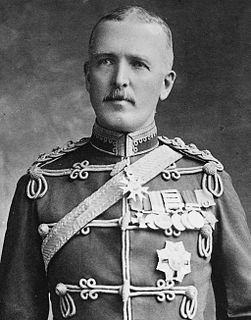 W
WGeneral Sir James Willcocks, was a British Army officer who spent most of his career in India and Africa and held high command during the First World War.
 W
WField Marshal Sir Henry Hughes Wilson, 1st Baronet, was one of the most senior British Army staff officers of the First World War and was briefly an Irish unionist politician.
 W
WSir Robert Bourchier Sherard Wrey, 11th Baronet of Tawstock Court, North Devon, was a prominent member of the Devonshire gentry.
 W
WMajor General Sir George John Younghusband, was a cavalry officer and major-general in the British Indian Army.